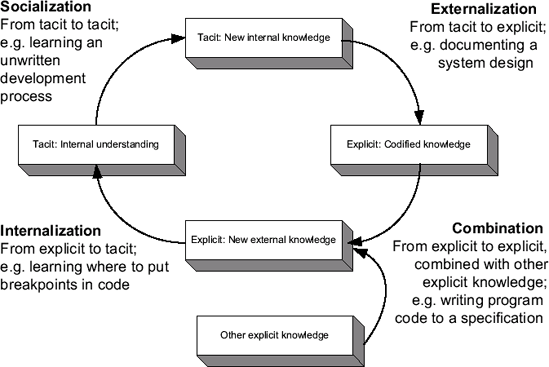3.7. Knowledge Creation
In producing a solution to a problem, we need to create new knowledge about the process and about the solution. There's a knowledge creation process at work. So far, we have discussed the communication, transfer and codification of knowledge, but we have said little about the creation of knowledge.
Nonaka suggested that we think of knowledge creation in four stages, as shown in Figure 3.3. This model starts with what we already know, namely tacit knowledge. This is turned into explicit knowledge, combined with other explicit knowledge and then turned back into tacit knowledge. At each stage, thought is needed for the transformation. This is known as the SECI model (socialization, externalization, combination, internalization). Knowledge creation is a continuous process, completion of one stage starting the next.
Figure 3.3. Four modes of knowledge conversion. Source: Based on a diagram from Nonaka and Takeuchi (1995)

With each conversion, knowledge is extended. This may mean that it is combined with some other knowledge to create new knowledge, or it may mean that more people understand the knowledge; it may also mean that individuals have a better understanding of existing knowledge.
This model is at work when we develop software. Written specifications are often the first attempt to codify business processes. Such processes are usually passed from person ...
Get Changing Software Development: Learning to Become Agile now with the O’Reilly learning platform.
O’Reilly members experience books, live events, courses curated by job role, and more from O’Reilly and nearly 200 top publishers.

